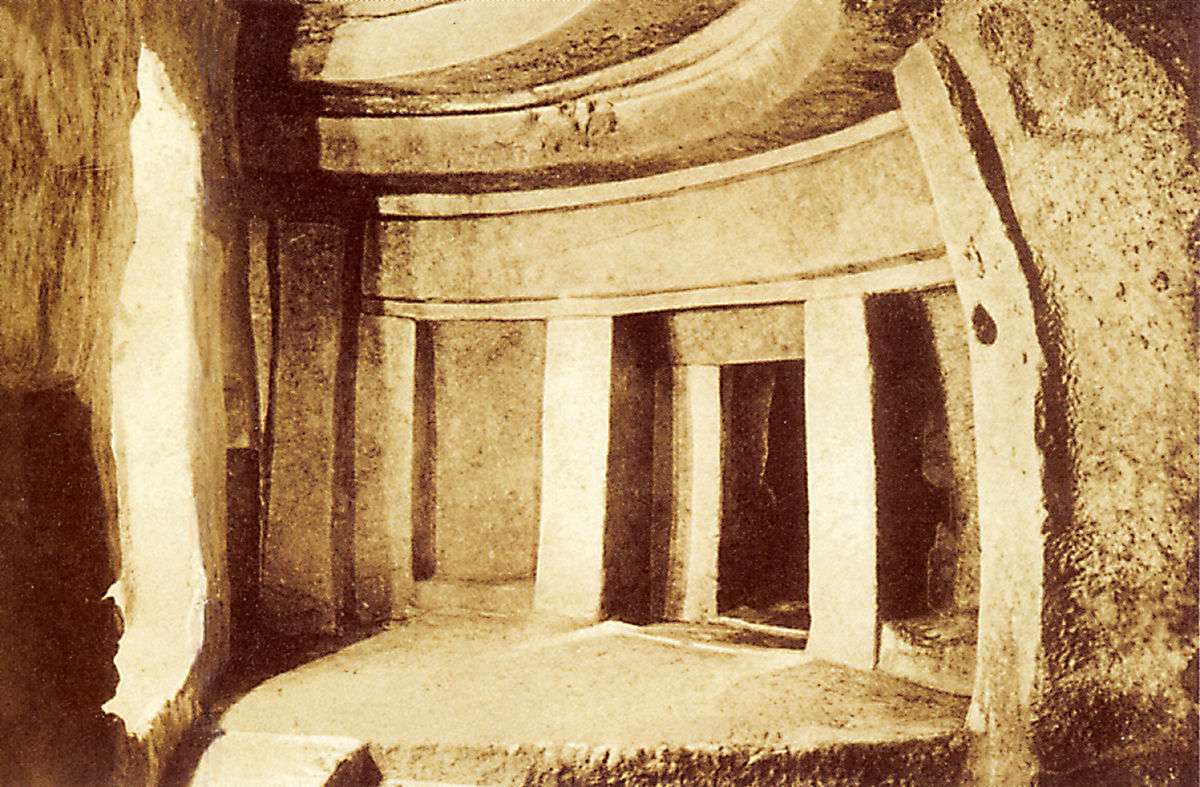Table of Contents
ToggleThe Hal Saflieni Hypogeum
Malta’s Subterranean Treasure
Hidden beneath the bustling streets of Paola, Malta, lies one of the most extraordinary archaeological wonders in the world: the Hal Saflieni Hypogeum. This subterranean complex, carved entirely out of limestone, is both a prehistoric necropolis and a masterpiece of engineering and spiritual design. Dating back to around 4000 BCE, the Hypogeum is older than the Pyramids of Giza and Stonehenge, placing it among the earliest monumental works of humanity. Recognized as a UNESCO World Heritage Site, the Hypogeum continues to captivate scholars, tourists, and spiritual seekers alike.
Discovery and Excavation
The Hypogeum’s discovery was accidental. In 1902, during construction work in Paola, laborers stumbled upon what appeared to be underground chambers. Initially concealed to avoid disrupting the construction, the find eventually came to the attention of archaeologists. Sir Themistocles Zammit, considered the father of Maltese archaeology, led the first professional excavations. What he revealed was nothing short of astonishing: a sprawling underground complex extending over three levels, with intricately carved walls, painted ceilings, and countless burial chambers.
The excavation unveiled thousands of human remains, along with artifacts such as pottery, beads, shell ornaments, and figurines. Among these, the “Sleeping Lady,” a small clay figure of a corpulent woman reclining on her side, became one of Malta’s most iconic prehistoric artifacts. It is widely believed to symbolize death, rebirth, or fertility, though its true meaning remains a mystery.
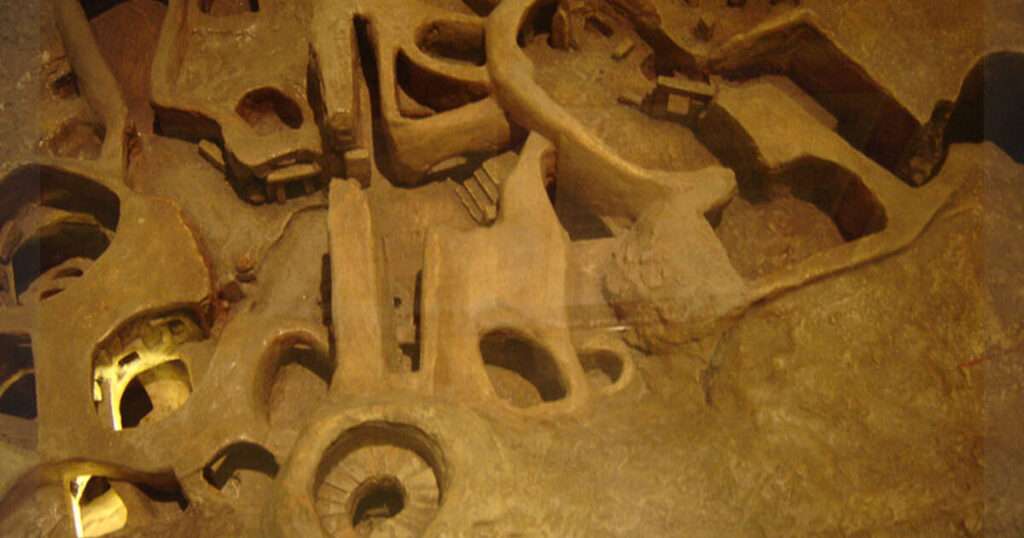
Structure and Architecture
The Hypogeum is a labyrinthine structure consisting of halls, corridors, and chambers carved directly into the island’s soft globigerina limestone. Spread across three distinct levels, the complex reflects not only the burial practices of Malta’s Neolithic inhabitants but also their architectural ingenuity.
The Upper Level is the oldest section, dating back to around 4000 BCE. It contains simple cavities and burial niches, suggesting that it was initially used as a collective tomb.
The Middle Level, carved around 3000 BCE, is the most elaborate and visually striking. Here we find grand halls such as the Main Chamber, the Oracle Room, and the Decorated Room. The walls of some chambers are adorned with red ochre spirals and circular motifs—the only known prehistoric wall paintings in Malta.
The Lower Level, about 10 meters underground, contains smaller burial chambers and storage areas. This level is less decorated, but its construction demonstrates remarkable planning and engineering skills.
The Oracle Room is particularly fascinating. It features extraordinary acoustics: sounds made within resonate throughout the Hypogeum, suggesting the space may have been used for ritual chanting or communication with the divine. Such features have led many to believe that the Hypogeum served both funerary and ceremonial functions.
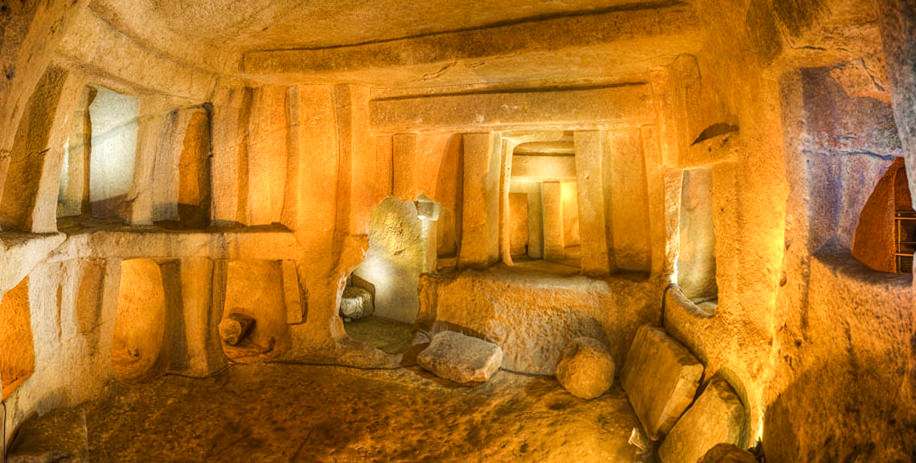
Spiritual and Cultural Significance
The Hypogeum was not simply a tomb; it was a sacred space deeply intertwined with the worldview of its creators. The careful design, acoustics, and artwork suggest that rituals surrounding death and the afterlife were central to its purpose. The use of spirals and circular motifs is often interpreted as symbolic of cycles—life, death, and rebirth.
Archaeologists estimate that over 7,000 individuals were interred within the Hypogeum, emphasizing its role as a communal burial site. Unlike societies where elite individuals were buried in grand tombs, the Hypogeum reflects a culture where collective identity and shared spirituality were prioritized.
The site also highlights Malta’s connection to broader Neolithic traditions across the Mediterranean. Similar to other megalithic structures on the island, such as Hagar Qim and Mnajdra, the Hypogeum reflects advanced knowledge of construction, symbolism, and ritual that continues to intrigue researchers.
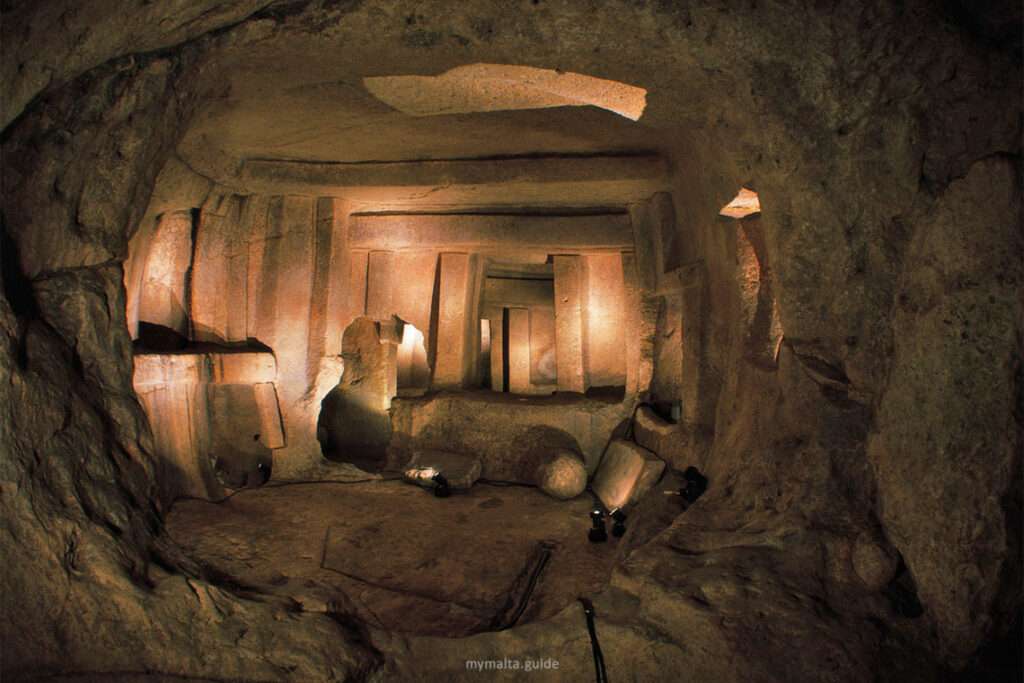
Preservation and Challenges
Due to its fragile condition, the Hypogeum faces significant conservation challenges. The underground environment is highly sensitive to fluctuations in temperature, humidity, and carbon dioxide levels caused by human presence. In the mid-20th century, unrestricted tourism led to damage, prompting authorities to close the site for restoration.
Today, access is carefully managed by Heritage Malta. Visitor numbers are limited to around 80 per day, ensuring that the delicate microclimate remains stable. Tickets must be booked well in advance, and guided tours offer visitors a chance to experience the Hypogeum’s haunting atmosphere while preserving it for future generations.
In addition to on-site conservation, a detailed 3D digital model of the Hypogeum has been created, allowing scholars and the public to explore its chambers virtually. This innovative approach helps reduce physical strain on the monument while broadening global access to its wonders.
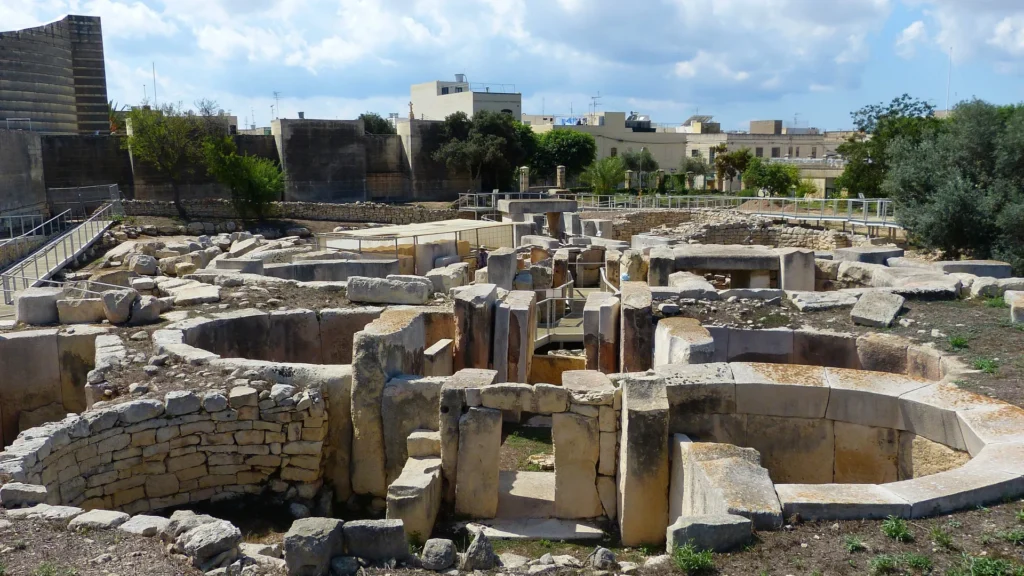
The Hypogeum in Global Context
The Hal Saflieni Hypogeum stands out not only as Malta’s greatest archaeological treasure but also as a monument of global importance. It offers insight into the spiritual and cultural life of Neolithic communities and challenges modern assumptions about early human societies. The architectural sophistication, combined with the symbolic depth of the artwork, reveals a people who were not only skilled builders but also profound thinkers about life, death, and the cosmos.
For archaeologists, the Hypogeum provides invaluable data about burial customs, social organization, and ritual practices. For visitors, it is an awe-inspiring reminder of humanity’s ancient quest to understand existence and transcend mortality. And for Malta, it represents a cultural jewel that anchors the island’s identity within the broader narrative of human civilization.
Comparison with the Ġgantija Temples
While the Hal Saflieni Hypogeum is Malta’s most remarkable underground monument, the Ġgantija Temples on the island of Gozo represent its most impressive above-ground megalithic achievement. Built between 3600 and 3200 BCE, Ġgantija predates the Hypogeum’s more elaborate middle level by several centuries, making it one of the oldest freestanding stone temple complexes in the world.
The contrast between the two sites highlights the diversity of Malta’s prehistoric culture:
Setting and Construction: The Hypogeum is carved entirely underground from soft limestone, creating a hidden world of chambers and passageways. In contrast, Ġgantija consists of massive megalithic blocks, some weighing over 50 tons, arranged into towering temple walls visible from afar.
Function: Both sites served ceremonial and religious purposes, but their focus differed. Ġgantija is widely interpreted as a temple dedicated to fertility and communal ritual, while the Hypogeum functioned primarily as a necropolis and spiritual gateway to the afterlife.
Art and Symbolism: The Hypogeum contains intricate ochre wall paintings, spirals, and acoustic features, emphasizing its intimate, mystical atmosphere. Ġgantija, though more monumental, lacks interior decoration, instead impressing visitors through sheer scale and the symbolic power of its colossal stones.
Community Role: Together, the two sites demonstrate a society deeply invested in ritual life. Ġgantija projected communal identity outward into the landscape, while the Hypogeum offered a sacred subterranean realm for the dead and the mysteries of existence.
Taken together, the Hypogeum and Ġgantija illustrate the breadth of Malta’s Neolithic civilization. One celebrates life and fertility under the open sky, while the other confronts death and eternity in the quiet of the earth.
The Hal Saflieni Hypogeum is more than just an archaeological site; it is a journey into the spiritual heart of the Neolithic world. Hidden beneath the streets of modern Paola, it connects us to ancestors who lived, worshipped, and dreamed thousands of years ago. Through its intricate chambers, haunting acoustics, and symbolic art, the Hypogeum speaks to timeless human concerns: the mystery of death, the hope of rebirth, and the enduring power of community. Preserved with care and reverence, it remains one of the world’s most remarkable testaments to early human ingenuity and spirituality.

